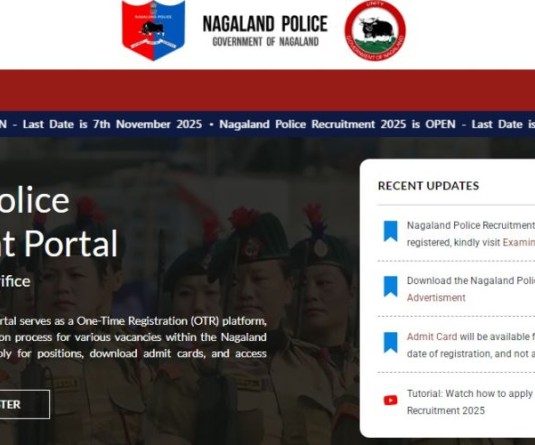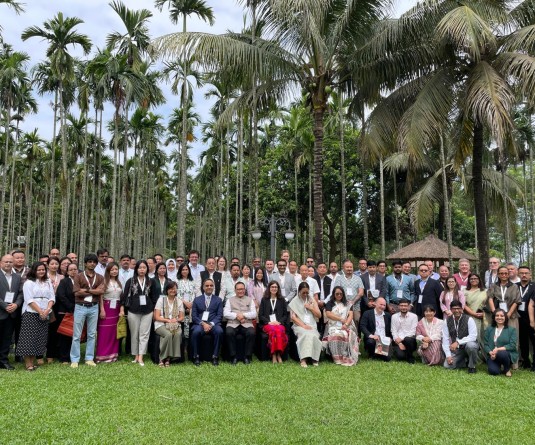Participants at the Blyth Tragopan Conservation and breeding centre.
.jpg)
Tokavi K Zhimo
Zunheboto | October 7
Wildlife Week 2025 was celebrated across Nagaland with a series of awareness programmes, nature walks, plantation drives and community-led conservation initiatives held under the theme “Human–Animal Coexistence.”
The Zunheboto Forest Division, in collaboration with the Kiphire Wildlife Division, Satoi Headquarter Administration, and Satoi Town Youth Organization, observed Wildlife Week 2025 under the theme “Human-Animal Coexistence” at the Cultural Hall, Satoi Headquarters, on October 7.
Highlighting the ecological importance of the Satoi Range, Obed Bohevi Swu, Divisional Forest Officer of Zunheboto, described it as a “virgin patch” within the district. “Through this initiative, we aim to promote ecotourism while preserving our pristine environment,” he said.
.webp)
Obangnener Jamir, NCS, Extra Assistant Commissioner of Satoi and co-host of the celebration, reflected on the historical and geographical significance of Satoi, noting that it was once under the jurisdiction of the Deputy Commissioner of Kohima until the late 1950s before coming under Mokokchung. He urged community ownership of developmental initiatives, adding, “Tourism is not a one-night show. A chance like this comes once in a lifetime. We must move forward, not backward,” referring to the ongoing ‘Satoi Connect’ initiative.
Delivering the thematic address, Seiechutho Katiry, SFS, Wildlife Warden of the Kiphire Wildlife Division, emphasized that wildlife encompasses not just animals, but also plants, trees, bees, and other natural elements. “Preserving wildlife ensures environmental stability, clean air and water, a balanced food chain, and disaster prevention,” he said. Katiry highlighted threats from urban expansion, habitat destruction, poaching, climate change, plastic pollution, and lack of awareness, calling for stronger protected areas, community participation, stricter law enforcement, education, and awareness to achieve sustainable development.
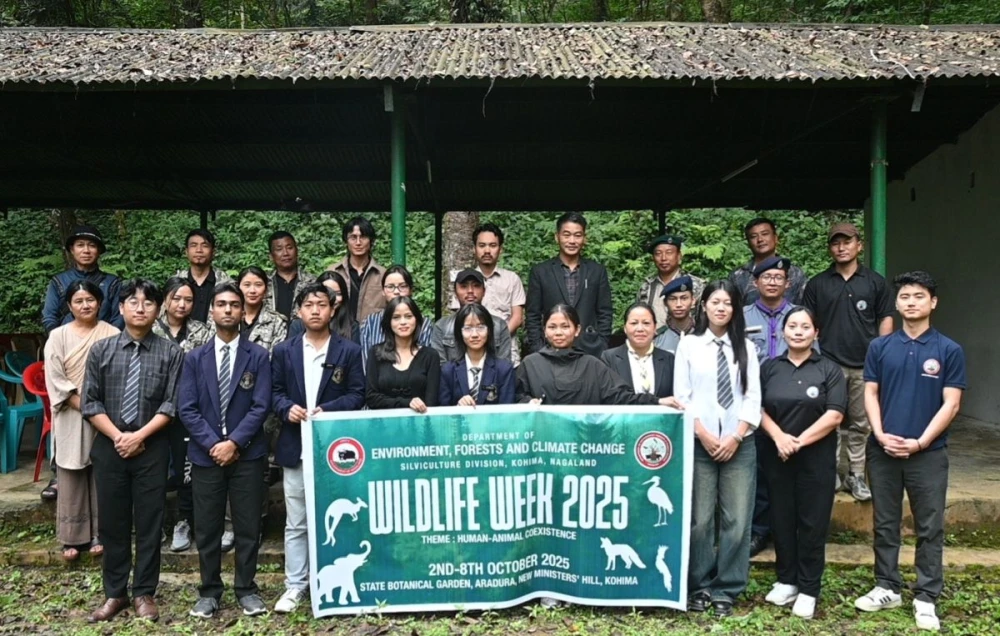
Lentina Longkumer, Tourist Officer of Zunheboto under the Nagaland Tourism Department, underlined the role of community involvement and training in ecotourism. “Wildlife is deeply rooted in Zunheboto’s identity. With the right training and participation, ecotourism can be a sustainable source of livelihood,” she said.
Vimeto Vekha, President of the Nagaland Tourism Association and proprietor of Abode Venture, spoke on the potential of tourism in the region, emphasizing the need for a clear unique selling point, improved infrastructure like homestays and guest houses, and total community support. “Tourism is the second-largest industry globally and is growing steadily,” he said.
Kejaroko Pieru, President of the Nagaland Association of Tour Operators and CEO of Pier Tours, highlighted the richness of Nagaland’s history, nature, and culture as tourism assets. He cautioned that not all tourists come with good intentions, stressing the importance of hospitality training and responsible tourism practices within the community.
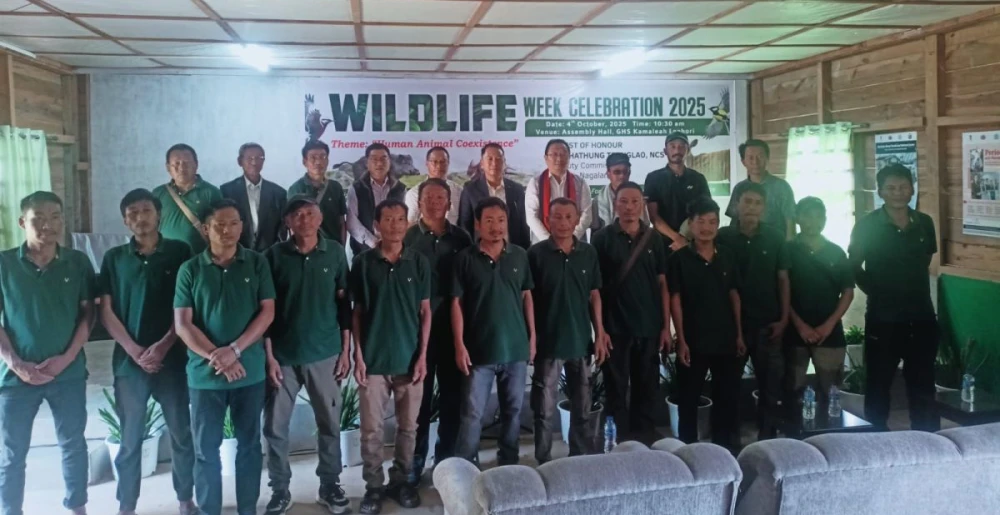
Sharing his journey of conservation, Angulie Meyase, Chairman of the Khonoma Nature Conservation and Tragopan Sanctuary Trust (KNCTS) and proprietor of Nature Watch, recounted initiating conservation efforts in Khonoma in 1998. “It takes time. Be patient. Without nature, there is no tourism,” he said. Meyase encouraged Satoi to develop its identity in wildlife tourism and treat tourism as an alternative livelihood. He also announced plans to form a committee to develop a sustainable plan forward, under the message “Where Conservation Meets Community.”
Dr Kupe Kapfo, Superintendent of Police, Zunheboto, praised Khonoma’s success and emphasized the role of community participation in conservation. “It’s easy to speak, but practicing conservation is difficult. Identifying and preserving our unique selling points is essential,” he said, highlighting the need for good law and order, road connectivity, and consistency. He also mentioned that with sincere effort, Satoi could receive facilities like tourist police and designated outposts. Acknowledging the shift from agriculture to ecotourism, he added, “Training is vital. Let God bless this initiative.”
Nature walk and awareness programmes mark Wildlife Week in Kohima, Phek
The Kohima Forest Division organised a Nature Walk and awareness programme for Class X students of St. Peter’s School, Kohima, on October 7. Students visited the Blyth’s Tragopan Conservation and Breeding Centre, where biologist Kanili Rhakho briefed them on the unique features of the state bird and the centre’s breeding and conservation efforts. The walk was organised under the Nagaland Forest Management Project in collaboration with the Forest and Biodiversity Management in the Himalayas Project.
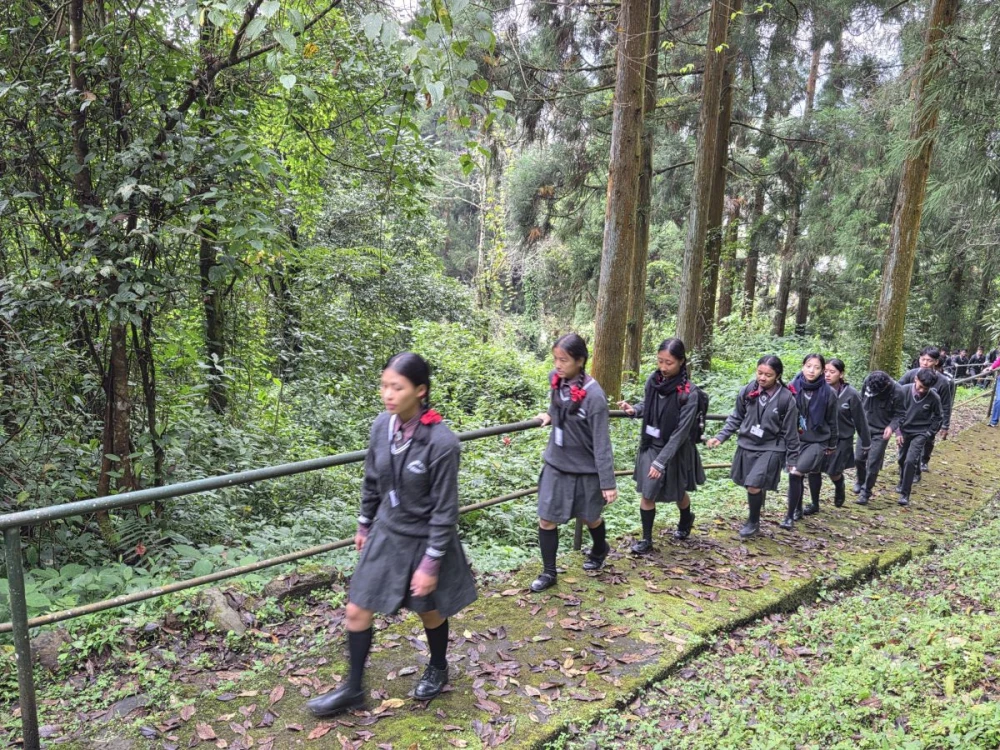
At the Forest Office Complex, Kohima, Conservator of Forests Zuthunglo Patton, IFS, delivered the keynote address, urging students to learn from traditional Naga practices that reflect respect for forests and wildlife. She emphasized that humans and animals are integral parts of the same ecosystem.
On October 6, the Silviculture Division commemorated Wildlife Week at the State Botanical Garden with a plantation drive, cleanliness campaign, and launch of the Garden Adoption Initiative. Chief Conservator of Forests Supongnukshi Ao, IFS, highlighted the need for community participation in conservation and stressed ecological balance. The first adopters included the Forestry Graduates’ Association of Nagaland, Nagaland Bharat Scouts and Guides, Nature’s Club, Kohima Science College, and Eco-Warriors Nagaland.
In Phek district, the Khrokhropfü Community Reserve Forest Committee, with the Phek Forest and Kiphire Wildlife Divisions, held a programme at Government High School, Kamaleah, Lephori Village, on October 4. Deputy Commissioner K. Mhathung Tsanglao, NCS, and officials were present. Keynote addresses by Wildlife Warden Siechutho Katiry and DFO Enyiwekha Wezah emphasized community involvement and sustainable eco-tourism. Competitions including drawing, painting, photography, and a mini-marathon engaged students in conservation awareness.
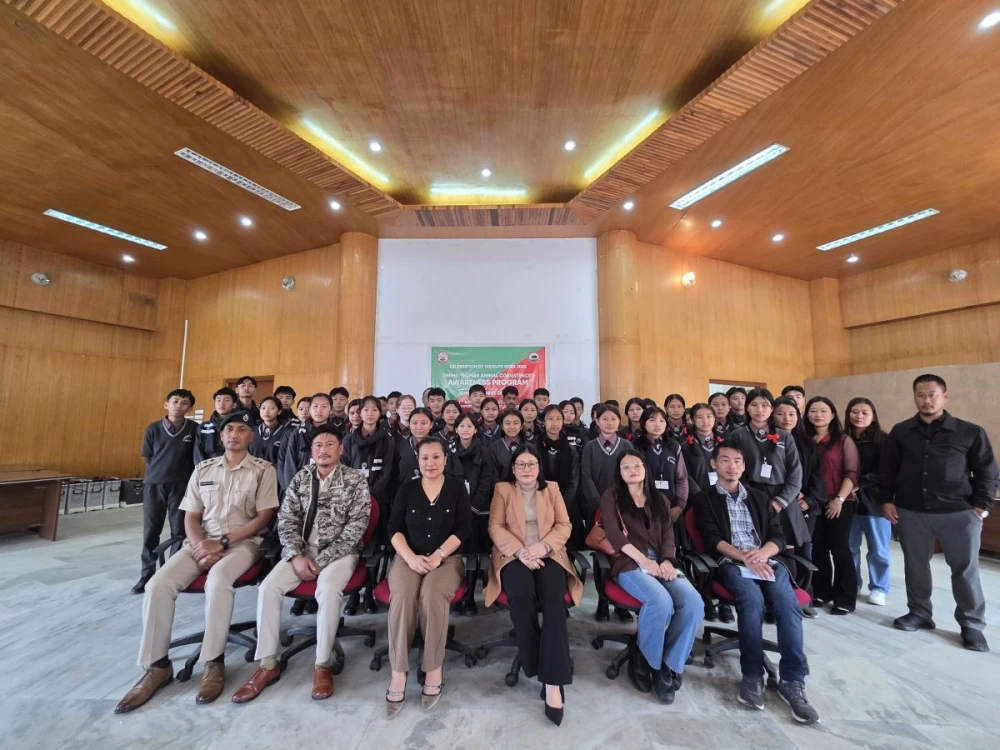
The Zunheboto Forest Division, in collaboration with the Kiphire Wildlife Division, Satoi Headquarter Administration, and Satoi Town Youth Organization, observed Wildlife Week 2025 under the theme “Human-Animal Coexistence” at the Cultural Hall, Satoi Headquarters, on October 7.
Highlighting the ecological significance of the Satoi Range, Obed Bohevi Swu, Divisional Forest Officer of Zunheboto, described it as a “virgin patch” within the district and stressed the importance of promoting ecotourism while preserving the environment. Obangnener Jamir, NCS, Extra Assistant Commissioner of Satoi, underscored the historical and geographical importance of the area and urged the community to take ownership of developmental initiatives, including the ongoing ‘Satoi Connect’ programme.
Seiechutho Katiry, Wildlife Warden of the Kiphire Wildlife Division, addressed human-wildlife coexistence, emphasizing that wildlife includes plants, trees, and pollinators, and plays a crucial role in environmental stability, clean air and water, and disaster prevention. He highlighted threats such as urban expansion, poaching, climate change, and plastic pollution, and called for community involvement, education, and stricter enforcement to achieve sustainable development.
Lentina Longkumer, Tourist Officer of Zunheboto, highlighted the potential of ecotourism as a sustainable livelihood with adequate training and community participation. Vimeto Vekha, President of the Nagaland Tourism Association, and Kejaroko Pieru, President of the Nagaland Association of Tour Operators, stressed the importance of road connectivity, infrastructure, hospitality training, and responsible tourism practices.
Sharing his experience in conservation, Angulie Meyase, Chairman of the Khonoma Nature Conservation and Tragopan Sanctuary Trust, encouraged Satoi to develop its identity in wildlife tourism and treat it as an alternative livelihood. He also announced plans to form a committee to develop a sustainable conservation-tourism plan under the message “Where Conservation Meets Community.”
Dr Kupe Kapfo, Superintendent of Police, Zunheboto, lauded Khonoma’s success and urged active community participation in conservation, highlighting the need for law and order, road connectivity, and sustained training. He acknowledged the shift from agriculture to ecotourism and concluded, “Training is vital. Let God bless this initiative.”
The event concluded with a vote of thanks by Vinoto Rochill, Deputy Ranger in-charge of Satakha Forest Range, and a closing prayer led by Kinotoli Aye, Youth Leader of Satoi Town Baptist Church.



